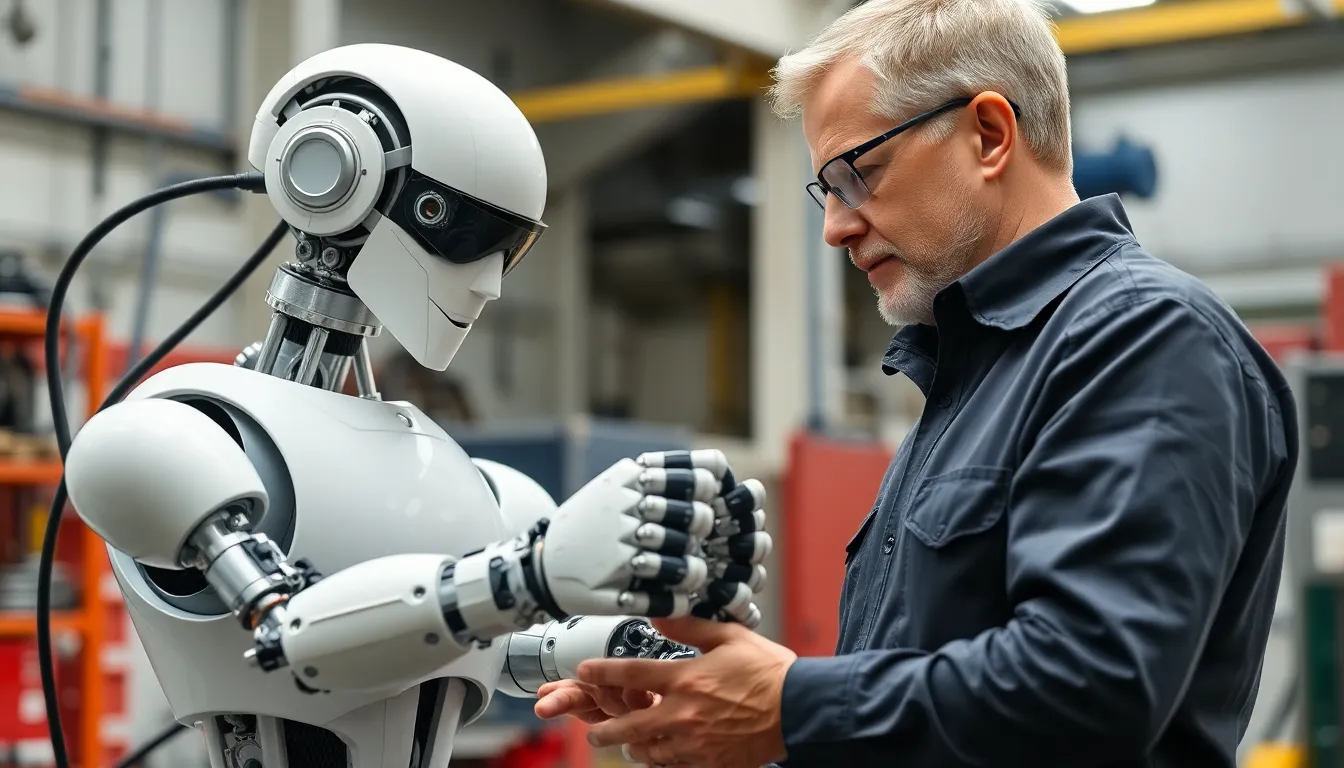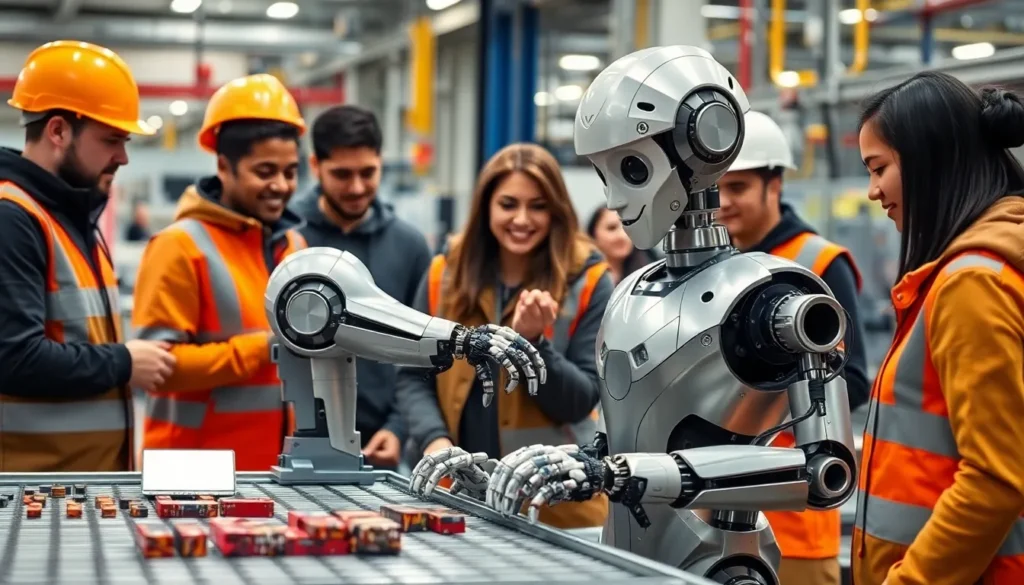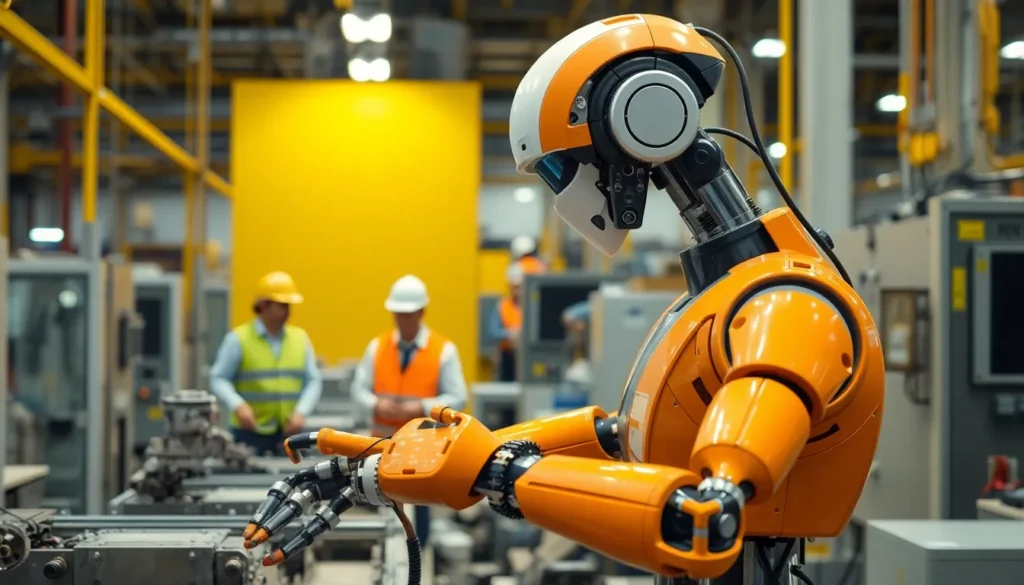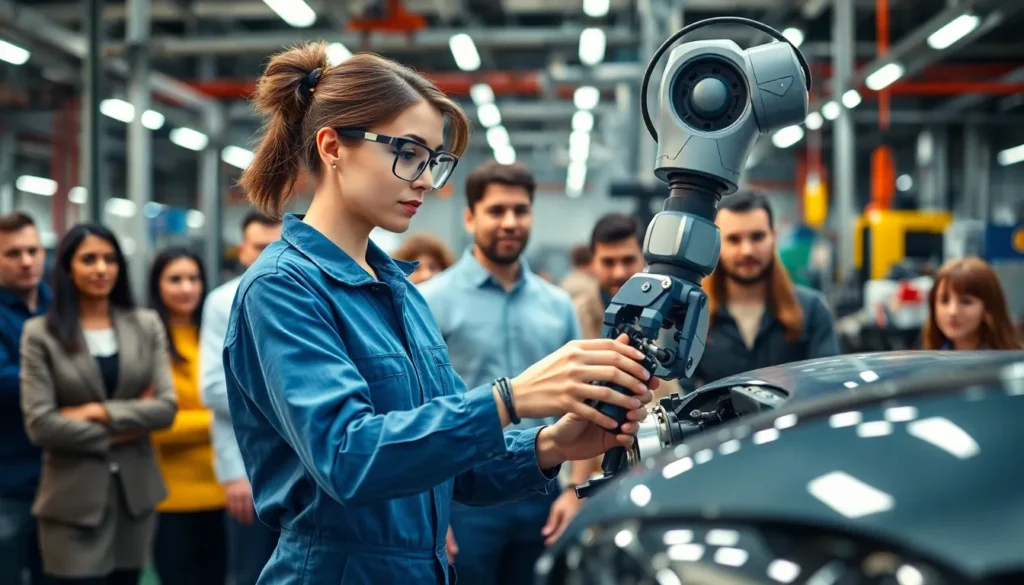Imagine a world where robots handle the mundane tasks you dread—like folding laundry or finding your missing sock. Sounds like a sci-fi dream, right? Well, it’s not just a fantasy anymore. From healthcare to agriculture, robots are stepping in to revolutionize industries and make life easier.
Robot Applications
Numerous industries leverage robots to enhance efficiency and productivity. Manufacturing utilizes robots for assembly lines, optimizing processes and minimizing manual labor. In healthcare, robotic systems assist in surgeries, improving precision and patient outcomes. Agriculture increasingly integrates robotic technology for tasks like planting, harvesting, and monitoring crops, which helps farmers manage resources effectively.
Logistics relies on robots for inventory management and order fulfillment. Autonomous vehicles navigate warehouses, transporting goods swiftly and reducing the need for workforce intervention. Additionally, retail environments benefit from robotic systems in inventory tracking and customer service, providing assistance in finding products or answering queries.
Robots also play a significant role in home applications. Smart vacuum cleaners autonomously clean spaces, providing convenience and saving time. Social robots help individuals with companionship and support, particularly for the elderly or homebound.
Education embeds robots in learning environments, enabling interactive and engaging experiences for students. Robots act as tools for coding education and STEM learning, preparing the next generation for a tech-driven workforce.
With ongoing advancements, robots continue to evolve and expand across various sectors. They address specific challenges while streamlining operations and enhancing user experiences. The future seems promising as robot applications develop further and integrate seamlessly into everyday life.
Types of Robot Applications

Various robot applications enhance efficiency and productivity across multiple sectors. Each category addresses specific needs, illustrating the versatility of robotic technology.
Industrial Automation
Industrial automation employs robots to improve manufacturing efficiency. Robots perform repetitive tasks like welding assembly and painting with precision and speed. Companies integrate these solutions to reduce operational costs while enhancing product quality. Collaborative robots work alongside humans, increasing safety and productivity. Real-time data analytics generated by these robots optimize supply chains and production schedules.
Medical Robotics
Medical robotics revolutionizes surgery and patient care. Surgical robots assist surgeons in performing intricate procedures with enhanced accuracy. They minimize recovery times and reduce patient risk. Robotic exoskeletons aid in rehabilitation, allowing patients to regain mobility. Robots also support telemedicine by providing remote monitoring and diagnostics, enhancing patient access to healthcare.
Agricultural Robotics
Agricultural robotics transforms farming practices through automation. Drones monitor crop health and provide aerial imaging for precise data collection. Autonomous tractors handle planting and harvesting, increasing efficiency in the field. Robots facilitate irrigation management, conserving water resources while maximizing yield. These technologies help farmers address labor shortages and reduce environmental impacts.
Service Robots
Service robots enhance customer interactions and daily tasks. Robots in retail environments assist with inventory management and customer inquiries, improving efficiency. Home robots like vacuum cleaners simplify household chores, freeing up time for users. In hospitality, robotic systems streamline check-ins and provide information, enhancing guest experiences. These applications highlight the growing integration of robots into everyday life, offering convenience and support.
Advantages of Robot Applications
Robots offer significant benefits across various sectors. They streamline processes, increasing efficiency and productivity while also reducing costs.
Efficiency and Productivity
Robots can operate continuously, performing tasks without fatigue. Their ability to execute repetitive actions at high speeds enables operations to run smoothly. Many robots, such as collaborative ones, work alongside human counterparts, enhancing both safety and output. In manufacturing, using robotic arms for assembly accelerates production lines, reducing turnaround times. With automation, tasks like inventory management improve accuracy and speed, allowing companies to handle more work in less time.
Cost Savings
Implementing robots contributes to lower operational costs. Companies often experience reduced labor expenses since robots can handle multiple roles without additional supervision. In logistics, reducing errors in order fulfillment leads to fewer returns and minimized waste. The initial investment in robotic systems often gets recouped through long-term savings in labor costs and increased efficiency. An automated agricultural robot can decrease expenses associated with manual labor while improving yield quality, showcasing significant financial benefits in the farming sector.
Precision and Accuracy
Robotic applications excel in providing high precision and accuracy across tasks. Medical robots, for instance, execute surgical procedures with unparalleled finesse, resulting in fewer complications and faster recovery times. In manufacturing, robots apply coatings or assemble components with consistency that human workers may not achieve. Such meticulous work minimizes material waste and maximizes product quality, ensuring customer satisfaction. Additionally, drones in agriculture monitor crops accurately, allowing for targeted interventions that enhance overall yield quality.
Challenges in Robot Applications
Robot applications face several challenges that impact their effectiveness across various sectors.
Technical Limitations
Technical limitations hinder the full potential of robots. Many robots struggle with complex tasks that require adaptability, such as navigating unstructured environments. Sensors often lack the precision needed for intricate operations. Additionally, software robustness can lead to vulnerabilities in performance. Robotics systems may require frequent updates and maintenance to function correctly. Various industries encounter integration issues with existing systems, which can complicate deployment. Collectively, these challenges stall the rapid advancement of robotic applications across sectors.
Ethical Considerations
Ethical considerations arise as robots become more prevalent in society. Concerns about data privacy surface, particularly with robots collecting personal information during interactions. Ensuring accountability for actions taken by autonomous systems presents a dilemma. Bias in programming may lead to unfair outcomes in decision-making processes. Moreover, the potential for job displacement raises critical discussions about future employment landscapes. Navigating these ethical challenges requires careful consideration and collaboration among industry stakeholders.
Workforce Impact
Workforce impact results from robot integration into various sectors. Organizations often see efficiency gains, but these gains can lead to workforce reductions. Certain tasks become automated, prompting potential job displacement for workers. Upskilling and reskilling initiatives become essential to prepare the labor force for evolving job roles. Companies implementing robotic technologies must address employee concerns to maintain morale and productivity. Striking a balance between leveraging technology and ensuring workforce stability remains a priority for leaders in affected industries.
Conclusion
The integration of robots across various industries marks a significant shift in how tasks are approached and executed. By taking on repetitive and mundane jobs, robots allow humans to focus on more strategic and creative endeavors.
As technology advances, the capabilities of robots will continue to expand, offering innovative solutions to complex challenges. While the benefits are substantial, addressing the ethical and workforce implications is essential for a balanced future.
The journey of robotic applications is just beginning, promising a landscape where efficiency and productivity thrive alongside human ingenuity.



